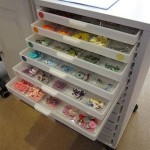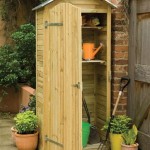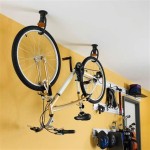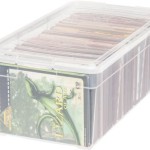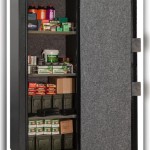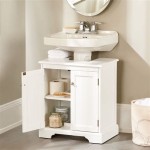Smart Strategies For Ball Cap Storage In Closets And Wardrobes
Ball caps, also known as baseball caps, are a common and versatile accessory. They serve practical purposes like sun protection and style enhancement. However, their unique shape and construction often present storage challenges. Improper storage can lead to deformation of the cap's crown and brim, dust accumulation, and a generally cluttered appearance within a closet or wardrobe. Efficient and organized storage is crucial to maintain the cap's shape, cleanliness, and accessibility. Numerous methods exist to effectively store ball caps, maximizing available space and ensuring the longevity of the caps. This article explores several smart strategies for storing ball caps within closets and wardrobes, focusing on maximizing space, preserving cap shape, and maintaining an organized storage system.
Utilizing Vertical Space: Hanging Solutions
One of the most effective ways to store ball caps in a closet or wardrobe is to leverage vertical space. Hanging solutions minimize the footprint occupied by cap storage and provide easy visibility of the entire collection. Several options exist within this category, each with its own set of advantages and disadvantages.
Over-the-Door Hangers: Over-the-door hangers are a simple and readily accessible solution. These hangers typically consist of a series of hooks or clips attached to a frame that hangs over the closet door. Caps are then hung by their adjustable straps or by the brim. This method is particularly useful for individuals with limited shelf space or drawer capacity. However, over-the-door hangers can sometimes obstruct door closure if the closet is already crowded, and the caps are prone to collecting dust if not regularly cleaned.
Hanging Cap Racks: Hanging cap racks are designed specifically for ball cap storage. These racks typically feature multiple clips or loops designed to hold the caps securely. They can be hung from the closet rod or from a hook on the wall. This method provides relatively easy access to the caps and helps maintain their shape. The racks may be made of various materials, including metal, plastic, or fabric. Metal racks are generally more durable, while fabric racks may be more space-efficient when not fully loaded.
Clip Hangers: Individual clip hangers offer a more customized solution. These hangers feature a single clip that attaches to the cap's brim. They can be hung from a closet rod or from individual hooks on a wall. This method allows for greater flexibility in terms of spacing and arrangement. Clip hangers are also useful for storing caps with delicate or embellished brims, as they minimize pressure on the brim's surface. However, installing individual hooks may require more effort than simply hanging a pre-assembled rack.
DIY Hanging Solutions: Many individuals opt for do-it-yourself (DIY) hanging solutions. This might involve repurposing existing items, such as shower curtain rings or clothes pegs, to create a custom cap storage system. DIY solutions allow for greater creativity and can be tailored to specific needs and preferences. For example, a string of clothespins can be attached to a wall or closet door to create a simple and inexpensive cap hanger. However, DIY solutions may require more time and effort than purchasing a pre-made product.
Optimizing Shelf and Drawer Space: Folding and Stacking Techniques
When hanging solutions are not feasible or sufficient, optimizing shelf and drawer space becomes essential. Careful folding and stacking techniques can maximize the storage capacity of these areas while minimizing the risk of damaging the caps.
Stacking Caps: Caps can be stacked on shelves or in drawers, but careful consideration must be given to the order and method of stacking. The most common method involves nesting caps within each other. This involves placing one cap inside another, creating a compact stack. However, this method can potentially deform the caps' crowns if too many caps are stacked on top of each other. To mitigate this risk, it is advisable to limit the height of the stack and to alternate the direction of the caps as they are stacked. For example, the first cap can be placed with its brim facing forward, while the second cap is placed with its brim facing backward.
Using Shelf Dividers: Shelf dividers can help to compartmentalize shelf space and prevent caps from toppling over. Dividers create individual sections for each stack of caps, ensuring that they remain upright and organized. This is particularly useful for storing caps on deep shelves, where they might otherwise become lost or disorganized. Shelf dividers are available in various materials, including metal, plastic, and wood. They can be either freestanding or attached to the shelf with clips or screws.
Drawer Organizers: Drawer organizers can be used to create a more structured storage system within drawers. These organizers typically consist of a series of compartments or dividers that separate different items. In the context of cap storage, drawer organizers can be used to create individual sections for each cap, preventing them from being crushed or tangled. Drawer organizers are available in various sizes and configurations, allowing for customization to specific drawer dimensions and storage needs.
Folding Caps for Drawer Storage: Some individuals prefer to fold their caps before storing them in drawers. This involves folding the brim inward and flattening the crown. While this method can save space, it may also crease the brim and deform the crown. If folding is necessary, it is advisable to use a soft cloth or filling material to cushion the cap and prevent creasing. Additionally, folded caps should be stored in a way that prevents them from being crushed by other items.
Clear Storage Boxes: Transparent storage boxes offer a protective and visually appealing storage solution. They shield the caps from dust, moisture, and physical damage while allowing for easy identification of the contents. Caps can be neatly arranged inside the boxes, either stacked or side-by-side. Clear boxes are particularly useful for storing seasonal caps or caps that are worn less frequently. The boxes can be stacked on shelves or stored in drawers, maximizing available space. Ventilation is essential to prevent moisture buildup, so ensure the storage containers have proper airflow, such as small holes or breathable fabric covers.
Maintaining Cap Shape and Cleanliness: Preservation Techniques
Regardless of the storage method used, it is crucial to implement preservation techniques to maintain the cap's shape and cleanliness. Protective measures should be in place to extend the lifespan of the ball caps.
Using Cap Inserts: Cap inserts are designed to maintain the shape of the cap's crown. These inserts are typically made of foam or plastic and are inserted into the cap when it is not being worn. They prevent the crown from collapsing or becoming creased, ensuring that the cap retains its original shape. Cap inserts are particularly useful for storing caps that are made of delicate materials or that have elaborate designs. They are also beneficial for caps that are stored for extended periods of time.
Dust Protection: Dust accumulation is a common problem for stored caps. Dust can dull the colors of the cap and make it appear dirty. To prevent dust accumulation, caps should be stored in a clean and dry environment. Storage boxes are ideal for this purpose, as they provide a physical barrier against dust. Alternatively, caps can be covered with a dust cloth or plastic bag. Regular cleaning, such as vacuuming or wiping with a damp cloth, can also help to remove dust that has already accumulated.
Avoiding Moisture Exposure: Moisture can damage caps, leading to mold growth and discoloration. Caps should be stored in a dry environment, away from sources of humidity. If the closet or wardrobe is prone to moisture, a dehumidifier or moisture-absorbing packets can be used to maintain a dry environment. Caps that have been exposed to moisture should be thoroughly dried before being stored. Air drying is the preferred method, as heat from a dryer can damage the cap. Stuffing the cap with paper towels can help to absorb moisture and maintain its shape during the drying process.
Regular Cleaning: Regular cleaning is essential for maintaining the cleanliness and appearance of caps. Caps should be cleaned according to the manufacturer's instructions. Some caps can be machine-washed, while others require hand-washing or spot cleaning. Stains should be treated promptly to prevent them from setting. Proper cleaning techniques will help to extend the lifespan of the caps and keep them looking their best.
Rotating Caps: Rotating the caps in the wardrobe prevents constant pressure that can distort the shape of one cap over time. By alternating which caps are stored on the bottom of a stack or which are hung in direct sunlight, the wear and tear that comes with storing caps is more evenly distributed, improving their longevity.
By implementing these strategies, individuals can effectively store their ball caps within closets and wardrobes, maximizing space, preserving cap shape, and maintaining an organized storage system. An organized storage plan contributes to the longevity and presentability of the cap collection.

6 Hat Storage Ideas To Organize Your Favorite Accessories

18 Hat Organizing Ideas

The Ultimate Guide To Closet Organization Extra Space Storage

How To Winter Clothes In A Small Space 12 Top Tips

How To Organize A Small Closet With Smart Storage
:strip_icc()/101903097-f52937deb7f34a2096f37f16480f6b4f.jpg?strip=all)
34 Closet Organization Ideas For Clutter Free Spaces

Maximize Closet Space Murphy Door

The Ultimate Guide To Closet Organization Extra Space Storage

Small Coat Closet Storage Solutions Blue I Style

How To Sweaters In The Closet Smart Storage Ideas
Related Posts


